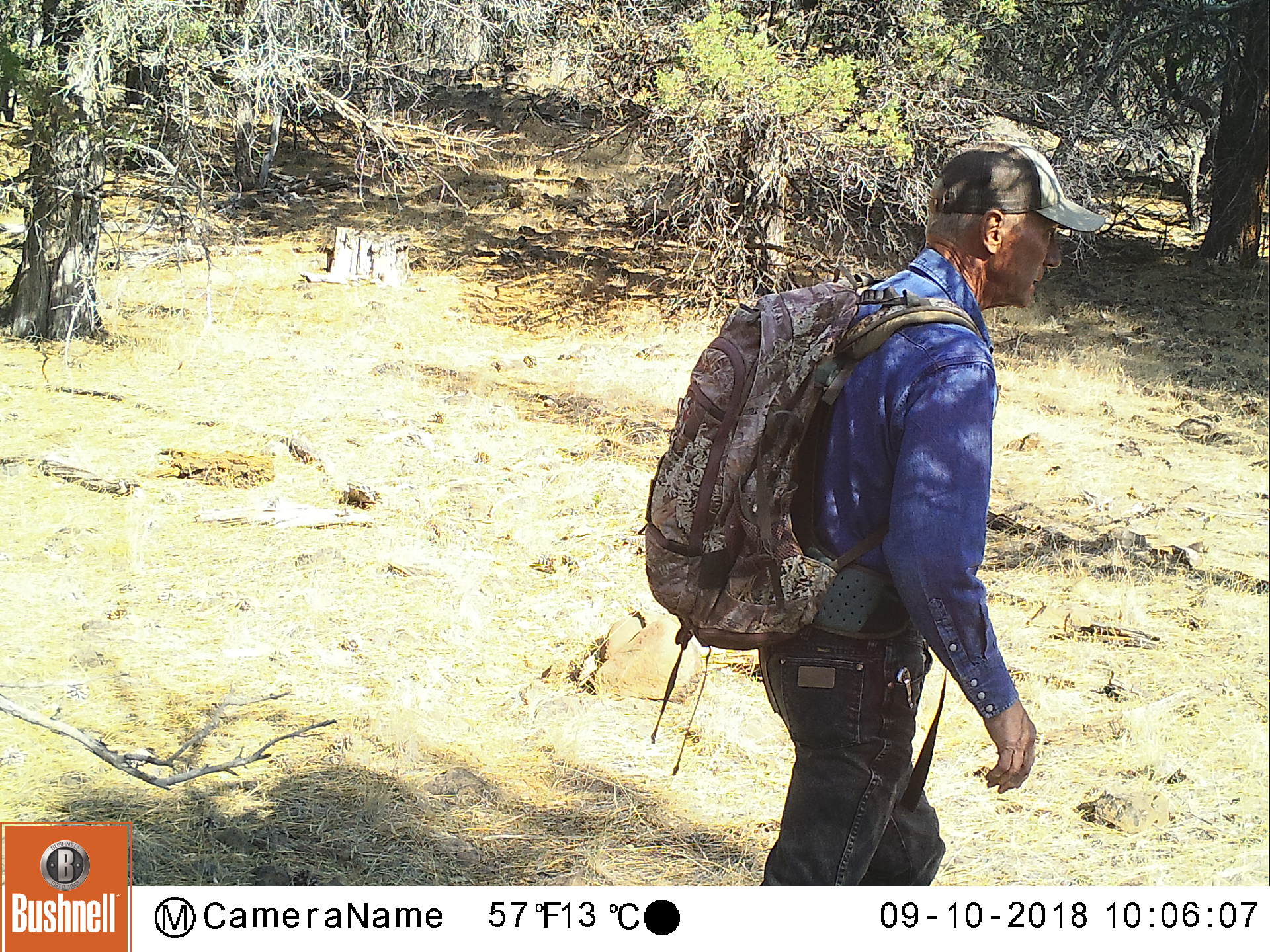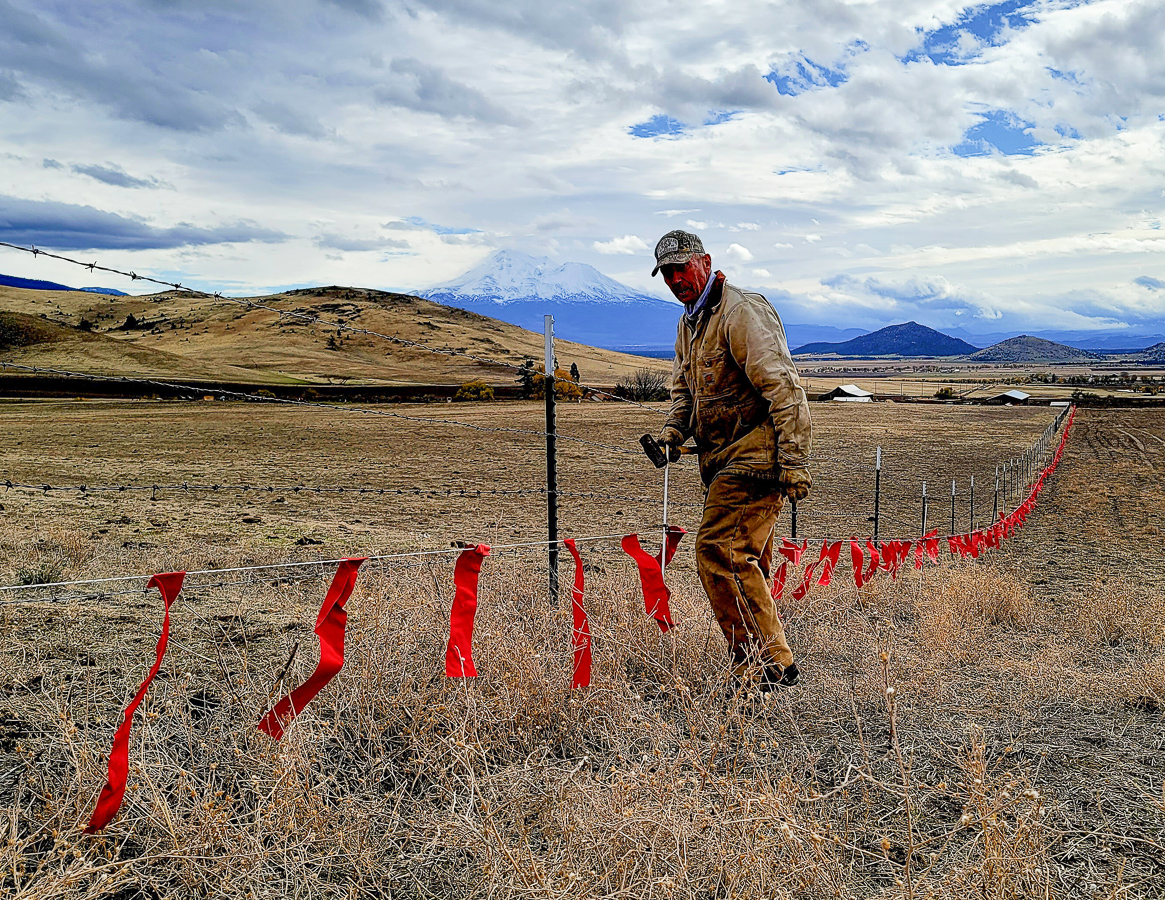Patrick. A human of the working wild
Humans of the Working Wild is a collection of stories from people in the West who are living, recreating and working with and among wildlife on working lands, lightly edited from their own spoken words. Humans of the Working Wild speaks across the rural-urban divide, sharing common human experiences on working lands that provide important wildlife habitat. We are inspired by one of the most successful profile series of all time, Humans of New York.
Ranching became a way of life for me many years ago. The values that it instills, the benefits of open space, the wildlife habitat provided by ranching land, utilizing renewable natural resources and all those attributes that come from the agriculture industry are very important to me. When I was 16, I moved to the area that I live now, and where I met my wife, in Shasta Valley, California. Her uncle was running the place at the time, and he got cancer, so we bought the ranch from him in 1976. Before her uncle ran the ranch my wife’s grandpa ran it, who started the family ranch. He came from the Azores and was a Portuguese dairyman. We kept the ranch, and we still have some of those cows here today.
It’s a challenging job for me to manage the ranch because I’m over 70 years old and still do most of the work myself. My wife has been a great partner and a tremendous helper throughout the years and my sons help when they can but have other obligations. So, I do most of the irrigation work, planting and feeding of the cattle and maintain all the equipment.
We say we own the land but really, we just paid for the right to be a caretaker on that piece of land, and maybe have some influence on what happens after we leave. We should take care of it the best as we can while we are here.
Patrick.
Also, in my role as the Siskiyou County Wolf Liaison, I serve as an interface between the agencies and the ranchers and even some of the environmental groups to help reduce wolf-livestock conflict. One of the things I enjoy most about my work on this front is getting out where it’s truly quiet. You know, where you might hear a Steller’s Jay or a tree squirrel off in the distance, and that’s all you’re going to hear that day. I like getting out there and trying to figure out what wolves are doing and where they’re staying and where they’re traveling, how they’re getting from one point to another.

I think this influx of wolves into California is very interesting. I can’t say that all ranchers feel as openly as I do about that. I think there’s probably some that would really prefer that they weren’t here, but for the most part, I think we can’t really make that decision or do anything about that.
In California, we don’t have all the tools that some of the other states have to work with wolves and reduce conflict. I think that means that it’s just more important to stay engaged and to implement all the measures and use the whole toolbox as much as possible to help reduce wolf-livestock conflicts and to help ranchers understand and get buy-in for the things that they can do to protect their livestock, such as managing cattle in ways that will help reduce vulnerability to wolf predation.
People know each other in this county and work together and trust relationships. Kent Laudon, a scientist with the California Department of Fish and Wildlife, and I have been pretty successful in developing working relationships with ranchers to gain the trust needed to interact and participate and try to help reduce wolf-livestock conflict. Trust with agencies is difficult because of all the endangered species limitations and constraints put on farmers and ranchers. Ranchers are already very frustrated because of water curtailment orders, and many feel the wolf is just one more burden to deal with.
The concern is ranchers becoming overwhelmed by increasing regulations, selling out, subdividing land and making as much money as they can. When that happens, we lose wildlife habitat, open space and the continued production of renewable natural resources. I think that would be a travesty to see that happen. It is just so important to have these ranches remain intact. My work with ranchers in the region is to help them through these challenges as much as I can so we can have sustainable ranches and farms, that’s what keeps me going.



I know first hand what it feels like to put your life’s work into something. We have a nice place with a small herd of cows and it’s hard to think about sending them down the road. I keep telling myself, “I’m going to sell these cows”, but it’s difficult. If I sold my cattle, I would have somebody else with their cattle on my property and they probably wouldn’t take care of the place or the cows the way I want it done. I’ve tried in the past and it didn’t work, so I will just do it as long as I can. When I can’t do it any longer either my boys will take it over or I’ll move on, one or the other. It’s a bridge we will have to cross when it comes to. But right now, I’m not ready to let go of that.
I think stewardship is one of the most important aspects of land ownership. We say we own the land but really, we just paid for the right to be a caretaker on that piece of land, and maybe have some influence on what happens after we leave. We should take care of it the best as we can while we are here and set it up so it’s taken care of when we are gone.






